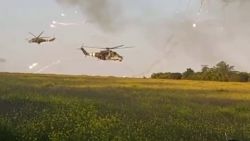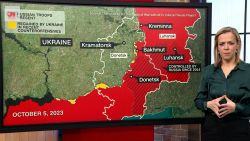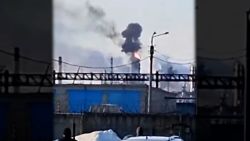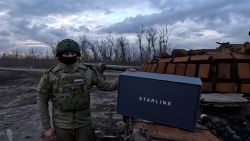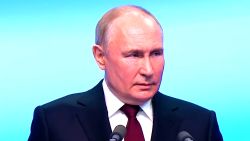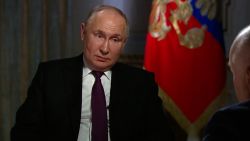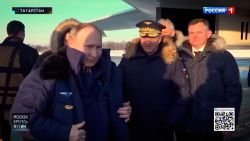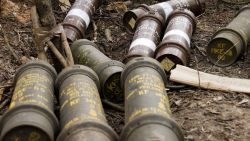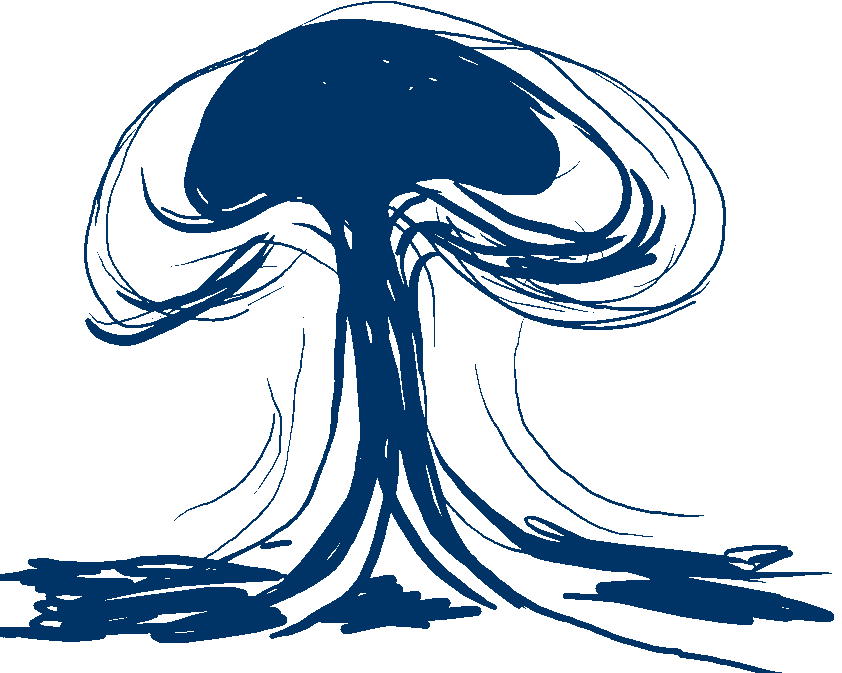Editor’s Note: Sébastien Roblin has written on the technical, historical and political aspects of international security and conflict. He holds a master’s degree from Georgetown University in conflict resolution and served with the Peace Corps in China. He tweets @sebastienroblin. The opinions expressed in this commentary are those of the author. View more opinion on CNN.
Having repeatedly snatched victories from the jaws of defeat in 2022, Ukraine’s forces made far slower progress over the summer in a counteroffensive to liberate southern Ukraine from Russia’s grip.
By August, officials in Washington had begun leaking scathing complaints about Ukrainian battlefield performance, while Ukraine’s supporters blamed the West’s long delays in delivering heavy equipment for having bought Russia time to fortify its defenses.

The backbiting, unfortunate under any circumstances given the importance of a unified front, was particularly misguided given that Ukrainian troops have recently begun gaining momentum after weeks of intense fighting.
Nonetheless, a chorus of actors wail that the summer’s disappointments show there’s nothing more to do than to cut off assistance to Ukraine, or at least threaten to do so to pressure Kyiv into suing for peace.
The doom brigade is nothing if not consistent, having repeatedly predicted, wrongly, that Ukraine stood no chance of withstanding Russia’s invasion and subsequent summer and winter offensives, and that efforts to liberate Kherson province were all but hopeless.
Never mind that their proposed “solution” of trying to strongarm Kyiv into making territorial concessions to appease Russia is politically untenable with Ukraine’s public, with leaders pledging to fight on regardless of the level of support they receive. And never mind that a forced Ukrainian peace plan wouldn’t appear to be matched by any overtures from the Kremlin, likely resulting in more war later just as the West’s failure to firmly respond to Russia’s seizure of Crimea in 2014-2015 set the stage for its invasion in 2022.
All of which means that the West needs to plan for the possibility of the war lasting several years to maximize the chances of either driving Russia out militarily or convincing Russian President Vladimir Putin that his waiting game is a losing one.
Giving up after a lackluster summer would be a mistake, even if elements of the GOP are being less supportive and the recent India-hosted G20 summit, which failed to issue a communique reiterating the prior year’s explicit condemnation of Russia’s invasion, underscored the challenge of international assistance beyond the West.
It’s true that the Ukrainian counteroffensive debuted with conspicuous setbacks and hasn’t advanced as much as hoped. Russia’s military did correct some mistakes from 2022, and when Ukraine’s newly Western-trained and -equipped (but inexperienced) brigades launched the counteroffensive in June, they discovered that Russian minefields were too dense and deep to breach quickly enough using mine-clearing vehicles before Russian drones, artillery and attack helicopters could detect and target them. Above all, Ukraine didn’t have nearly enough vehicles to absorb the losses.
But then, Ukraine’s military quickly switched to the slower attrition warfare to which it was accustomed. Engineers carefully cleared lanes through vast minefields on foot. Meanwhile, Kyiv’s troops used artillery superiority, newly won thanks to Western deliveries of weapons, to methodically grind away at Russian batteries and manpower. Ukrainian troops manage to advance an average of 700 to 1,200 meters every five days using these methods, according to a special report by the British Royal United Services Institute think tank.
Entering September, the counteroffensive still has the potential to achieve important intermediate goals. At present, Ukraine has a couple of months left before it risks running out of the needed artillery shells, fresh combat units and time before muddy fall weather renders further major offensive operations at least temporarily unviable.
Ukraine’s slow progress in part reflects a risky Russian strategy to “defend forward” rather than taking advantage of the multiple layers of their defenses to fall back. This denied Ukraine initially easier territorial gains at the cost of heavier Russian losses. But some analysts believe Russia may finally be running low on units to hold the line, and that deeper defensive lines are much less robustly defended than the forward ones.
In August, Ukraine also finally committed elite brigades it was holding in reserve, in hopes of breaking through Russian lines first. In a large battle over the small village of Robotyne, they overcame Russian forces there and then began flanking eastwards toward Verbove, which could help Ukraine chisel a path towards key cities including Tokmak and, ultimately, Melitopol.
At the same time, Russia’s ability to capture or recapture Ukrainian territory this winter seems limited, given the failures of its previous, wasteful winter offensive, its losses suffered this summer and the reliably poor leadership of Defense Minister Sergei Shoigu and general staff chief Valery Gerasimov.
Thus, if Kyiv can retain its gains and avoid excessive losses and shell expenditures, it could continue to creep south toward Melitopol to cut the land bridge to Russia’s strategic bases and port in Crimea.
To be clear, Kyiv’s desire to liberate territory isn’t some quixotic quest of national honor. Ukrainians in occupied communities have reportedly been subject to torture, mutilation, sexual violence and execution, while thousands of children have been forcibly removed from their families and deported to Russia. Moreover, land seized by Russia earlier has been used to strike ever deeper into Ukraine, making restoring defensible borders an existential concern.
To give Ukraine its best shot at liberating regions occupied by Russia since 2022, Washington and NATO need to work out multi-year plans to sustain military assistance — above all artillery systems and ammunition, followed by air defenses, drones and armored vehicles. As stores of easily donated equipment from the West dry up, new large-scale production and procurement orders funded by the US and its allies must be stepped up.

Western assistance, combined with Ukrainian courage, have helped Kyiv’s forces persevere in an exceptionally tough fight. Following on its boost to Ukraine’s artillery, in July the Biden administration began crucial supplies to Ukraine from its large stocks of controversial cluster artillery shells — a difficult decision as cluster shells leave behind long-lasting hazards to clear post-battle. But Kyiv got the ammunition needed to sustain the counteroffensive longer while awaiting expanded factory production of conventional shells in 2024.
Meanwhile, Western armored vehicles sharply reduced casualties to crew and passengers in vehicles that were hit, while French and British cruise missiles delivered effective strikes on Russian command centers and ammunition dumps as far as Crimea.
Looking ahead, the US should sustain deliveries of shells and rockets as well as Bradley fighting vehicles (credited with playing a key role at Robotyne). And the battalion of 31 Abrams tanks soon arriving in Ukraine should be followed by many more.
Those tanks will come with depleted uranium ammunition, but despite widespread claims to the contrary, multiple studies have not found these to pose health risks worse than regular anti-tank shells. Washington should also consider contributing longer-range missiles like the ATACMS missile the Biden administration, according to some insiders, may be on the verge of authorizing.
Then there’s the matter of overcoming endemic foot-dragging in rebuilding Ukraine’s air force despite commitments to finally give Ukraine F-16A jets. These are not wonder weapons, but a vital steppingstone to helping Ukraine eventually build a modern, Western-equipped air force. NATO training must also improve in both quantity and quality, including crash courses for senior Ukrainian command staffs on planning large, complex operations that Ukraine’s military struggles to execute.
Let there be no mistake — the war ahead remains a horror. But by helping Ukrainians liberate their territory, the US furthers its own interests in defeating Russian aggression in Europe and demonstrating the high potential costs of wars of conquests targeting US partners.
Putin miscalculated disastrously when he invaded in Ukraine, so he’s now hoping to outlast Western support for Ukraine to rescue what spoils he can. Moscow’s elite particularly want to hold out through 2024 in hopes that former President Donald Trump retakes office and cuts aid as opposition to support Ukraine grows within the GOP.
But folding in the face of manageable setbacks can be fatally self-defeating. During the American Civil War, Gen. George McClellan famously ran against Lincoln on a platform favoring peace with the Confederacy — even though the South’s total surrender at Appomattox followed just months later. Imagine how a successful McClellan “peace” plan could have inevitably led to more wars, indefensible oppression and bloodshed.
The high cost of defeating Putin’s invasion is lamentable. But failing to do so now could entail the US, Europe and Ukraine paying a much higher price later.

